



Attraction

Recreation
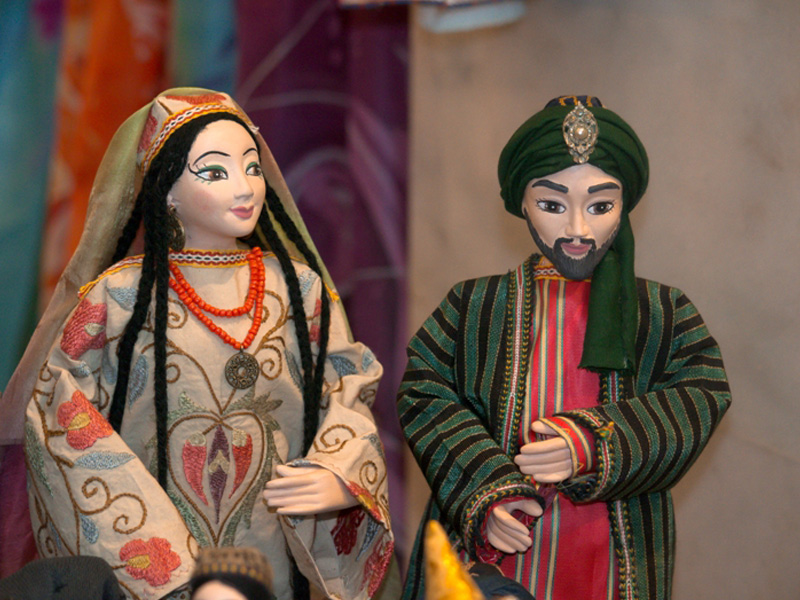 This week in Postcards a visit to the east of Uzbekistan and the ancient city of Khiva. As well as having stunning monuments, the city is rich in culture and traditions, including puppetry.
|
 A specific signature in the art of Atahan Allabergenov, Khorezmian painter, Academician of the Academy of Arts of Uzbekistan, is the presentation of the history of ancient architectural structures, small streets, houses, antique items, and quiet corners of nature in painting. Working as a theatre artist, he created wonderful watercolours, paintings and drawings, always remaining true to the art. Not every painter has a skill to capture the subtleties in the colour palette.
|
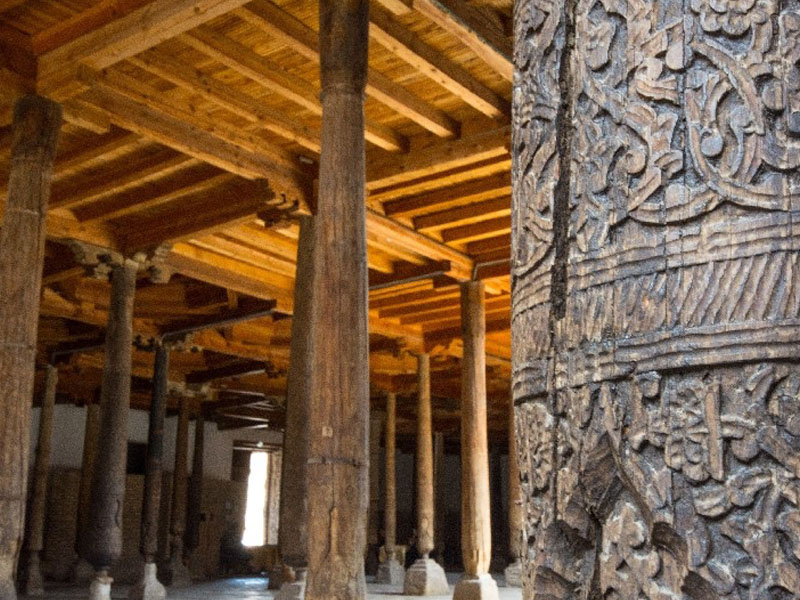 The end of the 19th and early 20th century was the golden age of monumental art in Khiva, the centre of applied arts in Uzbekistan, known worldwide for its unsurpassed monumental wood-carving. A whole galaxy of traditional master craftsmen had been trained, who contributed greatly to the development of classical art, rich in traditions. Among them are renowned masters of painting and wood- and plaster-carving, namely Abdulla Boltaev, Ruzmat Masharipov, Ata Palvanov…
|
 The jeweler’s art was widespread in the ancient Khiva. Masters worked with gold, silver and alloys, precious stones and imported glass. They created rings, bracelets, earrings, badges, belts, and harnesses. Items found at Koi-Krilgan-Kala reflect the merging of steppe and city cultures both in form and motif. Various items made of bone and bronze in the shape of pins decorated with the designs of five, vortex, and flower rosettes have the symbolic-magic significance.
|
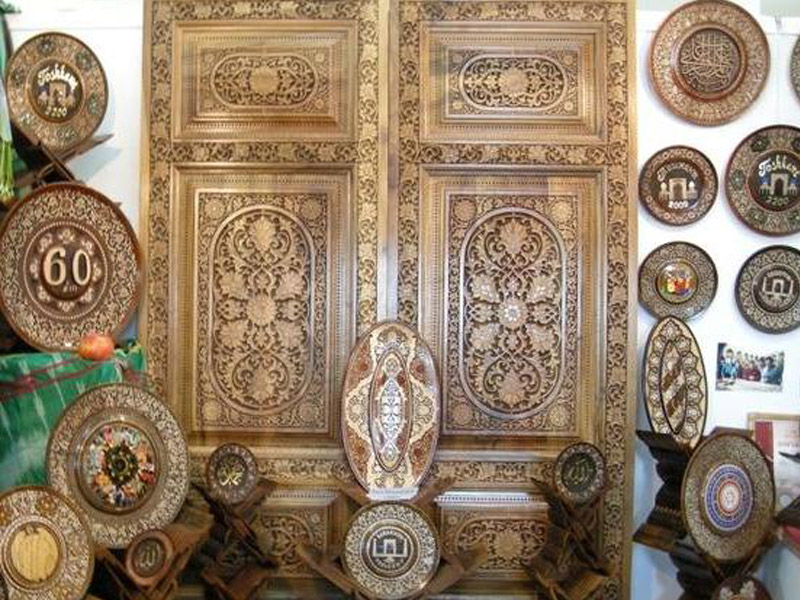 One of the most ancient and well developed of the artistic trades of Khiva is artistic ceramics. An important early chapter in its long history the Kushan period, when new types of ceramic vessels with various and original ornaments appeared.
|
 Khiva is a museum-city where monuments and whole ensembles were erected by unsurpassed masters. Undoubtedly, the construction of Khorezm masters is a part of the world culture. The ancient castles, early medieval fortresses, and later cities of the most ancient oasis became famous worldwide and they witness the century-old experience and talent of Khorezm architecture.
|
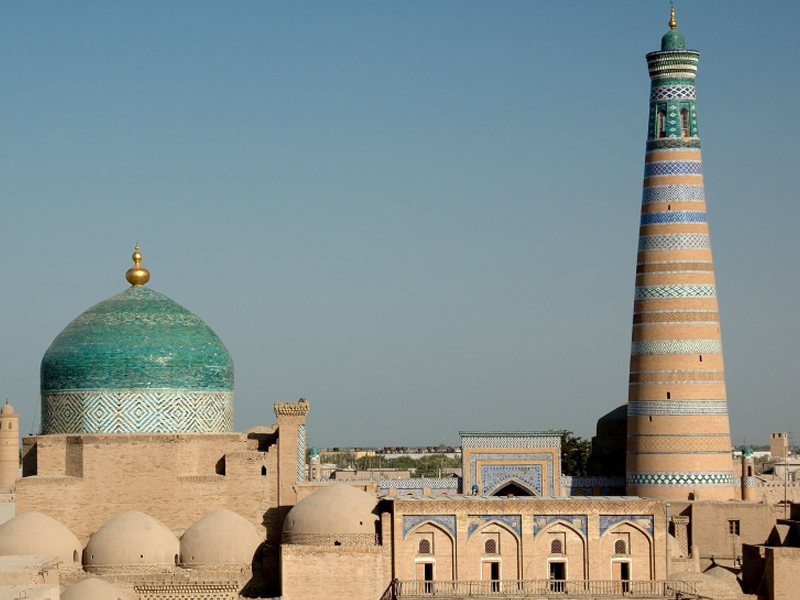 The architectural monuments of Khiva — the madrasas and mosques, minarets and mausoleums, dwelling houses and palaces, caravanserais and bathhouses — are organically related. Ancient traditions of construction are reflected in these monuments, with their infinite variety of heights and depths, massive and light elements, cupolas and rectangles, darkened and lighted spaces.
|
 Trade was the main source of income in Khiva. At the beginning of the nineteenth century, Mukhammad Rakhim Kungrad, widened trade by granting the Turkmen the possibility to buy bread in Khiva, and together they began ensuring the safety of the Khiva caravan through the territory of present-day Turkmenistan.
|
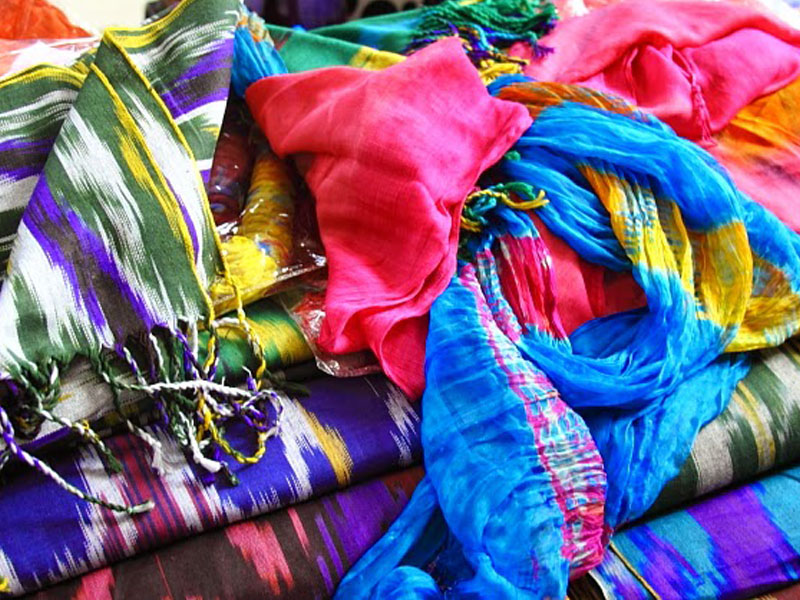 The basic part of the craft industry of the khanate was concentrated in Khiva. However, the years of economic development very often were replaced by a decline period. Anthony Jenkinson, representative of the English Trade Company, who visited Khiva in 1558, noted that the city of Vazir «was damaged very much by the internecine wars. Especially during the last seven years, it was destroyed four times. That is why the number of merchants was so low and at the same time they were very poor, so that I could sell only four pieces of fabric in the whole city. The petty producers comprised a considerable portion of population. The handicraft here was specialized.»
|
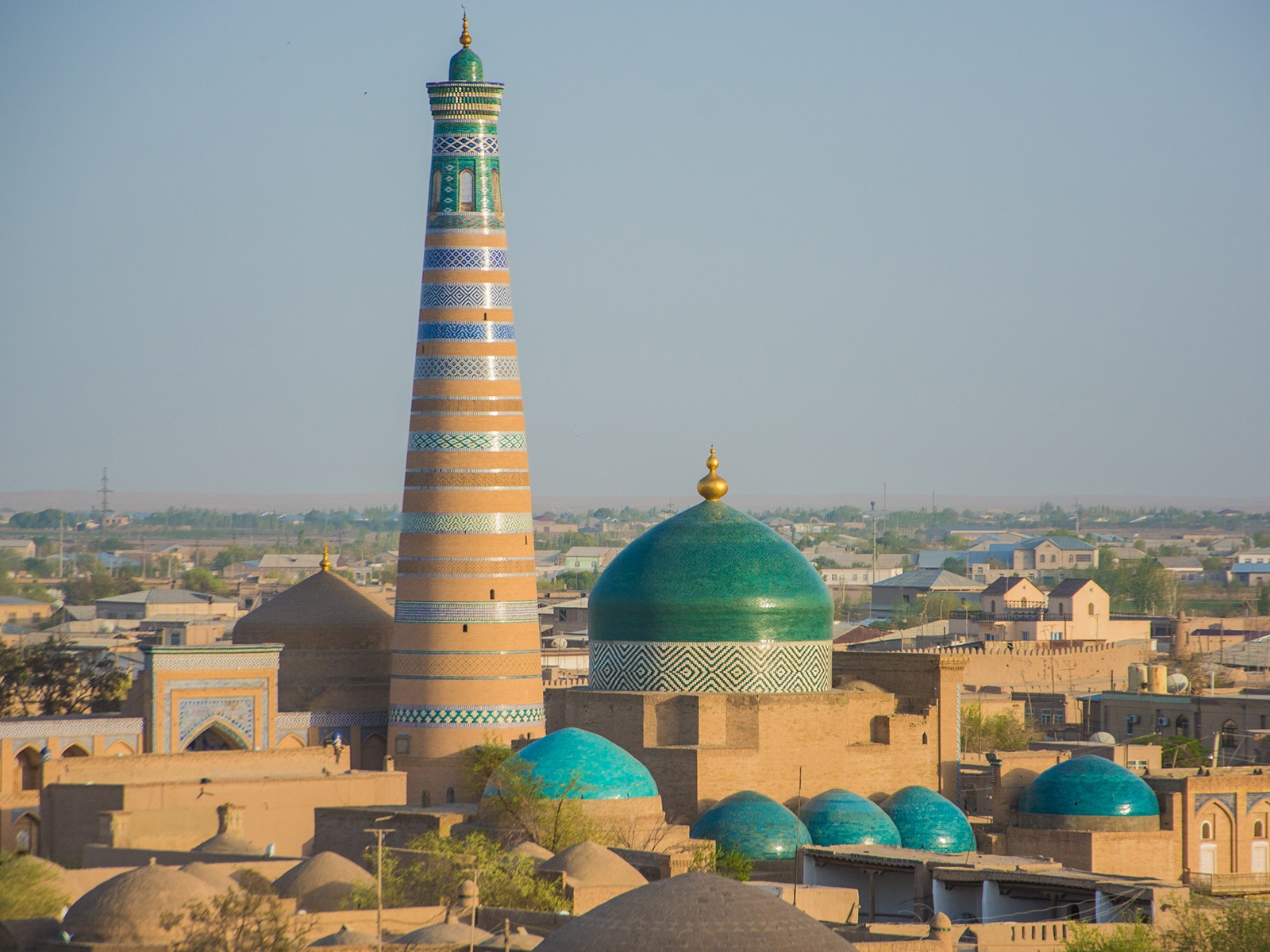 Behind the defensive wall of Khiva, you can easily lose all sense of reality, the magical past seems so close. At 2,500 years old Khiva is one of the oldest cities on the Great Silk Road. This area behind the fortress is called Ichan Khala – meaning “the inner town’‘. It was where rulers and the aristocracy lived and entertained guests from all over the world. The whole area is now on UNESCO’s list of World Heritage.
|